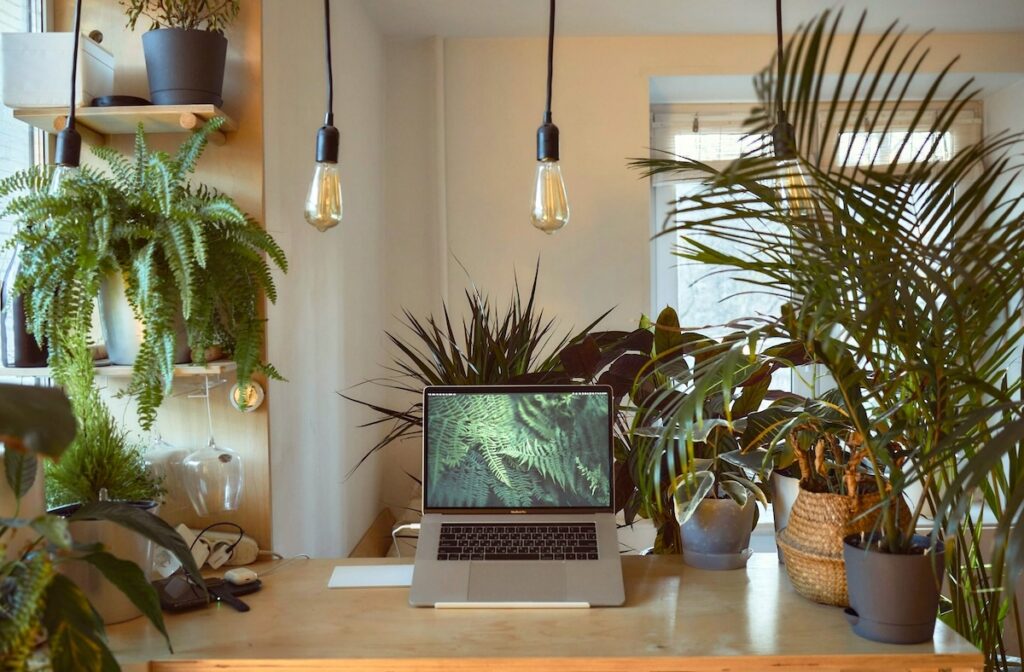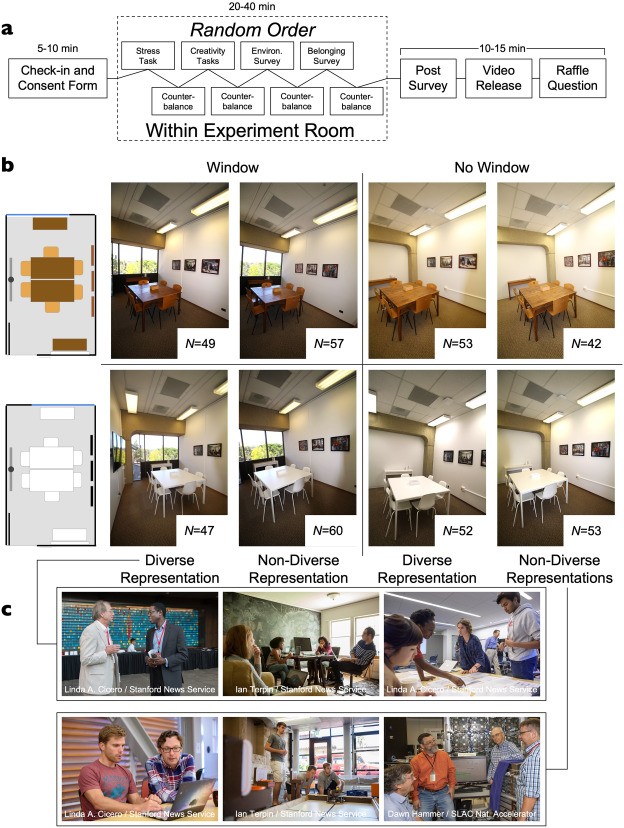
With each new study, we learn more about the power of a well-designed work environment to affect our stress levels. In a new paper, Isabella P. Douglas of Stanford University and her colleagues examine, among other things, how the presence or absence of windows, natural materials, and diverse representation in artwork can do just that.
Many designers already prioritize creating inclusive and restorative workplaces, and this study adds to the evidence supporting that priority.
The authors found that when people performed a cognitive, stressful task, their stress levels, as measured by a wearable sensor, were lower if they performed the task in a room with wooden furniture. They have also reported feeling less negatively aroused in a room with a nature-facing window.
This was predictable, but also noteworthy because the study had a larger-than-usual sample size of over four hundred participants. The new finding was that having pictures of different genders and races on the wall made people feel less stressed, according to their self-reported levels.

The research team had study participants spend time in variously equipped rooms and complete several cognitive tasks on a computer. Each participant experienced a specific setup. These setups always had a different combination of
- Wooden versus white laminate furniture
- A window with a view of nature versus no window
- Photographs of diverse groups of people versus non-diverse groups
Participants wore a sensor that measured how well their skin conducts electricity (skin conductance). This measure reflects our state of emotional arousal, which is often associated with stress.
It indicates activation of the “fight or flight”, sympathetic part of the nervous system. In addition, the researchers asked people about their stress and arousal levels.
What did the researchers find?
The results confirm what we already know about the power of daylight, natural views and wood to reduce stress levels. People reported feeling less stressed in the presence of wood furniture.
They also felt less “negatively aroused” in the presence of wood and windows with natural views. Their physiological stress levels, as measured by skin conductance sensors, were significantly lower in the room with wood furniture.
Participants also reported feeling less stressed in the rooms where the photographs on the walls showed a more diverse group of people in terms of gender and race.
What does this mean for architecture?
This study makes it clear that it is particularly important to choose natural materials such as wood in spaces where people work and experience stress, and that windows to the outdoors are also a positive addition to these areas.
The finding that diverse representations can have desirable psychological effects supports their use beyond the currently discussed social reasons.
Subscribe to Venetian Letter
You will receive our regular newsletter with blog posts, interviews, books and events on human-focused architecture and urban design.

Sally Augustin, PhD, a Fellow of the American Psychological Association, is the editor of Research Design Connections, which reports and synthesizes (in everyday language) the findings of recent and classic research in neuroscience, cognitive science, and the social sciences that are useful to designers.
Dr. Augustin is also a practicing environmental psychologist, a principal at a consultancy Design With Science, and a founder of The Space Doctors. Her work has been discussed in publications such as The New York Times and The Wall Street Journal and she holds leadership positions in professional organizations such as the Transdisciplinary Workplace Research Network and the Environmental Design Research Association.
References
Isabella Douglas, Elizabeth Murnane, Lucy Bencharit Basma Altaf, Jean Costa, Jackie Yang, Meg Ackerson, Charu Srivastava, Michael Cooper, Kyle Douglas, Jennifer King, Pablo Paredes, Nicholas Camp, Matthew Mauriello, Nicole Ardoin, Hazel Markus, James Landay, and Sarah Billington. 2022. “Physical Workplaces and Human Well-Being: A Mixed-Methods Study to Quantify the Effects of Materials, Windows, and Representation on Biobehavioral Outcomes.” Building and Environment, vol. 224, 109516, https://doi.org/10.1016/j.buildenv.2022.109516